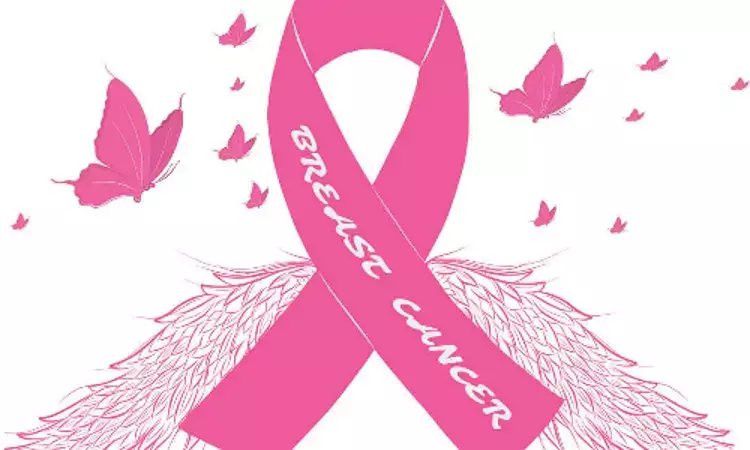- Home
- Medical news & Guidelines
- Anesthesiology
- Cardiology and CTVS
- Critical Care
- Dentistry
- Dermatology
- Diabetes and Endocrinology
- ENT
- Gastroenterology
- Medicine
- Nephrology
- Neurology
- Obstretics-Gynaecology
- Oncology
- Ophthalmology
- Orthopaedics
- Pediatrics-Neonatology
- Psychiatry
- Pulmonology
- Radiology
- Surgery
- Urology
- Laboratory Medicine
- Diet
- Nursing
- Paramedical
- Physiotherapy
- Health news
- Fact Check
- Bone Health Fact Check
- Brain Health Fact Check
- Cancer Related Fact Check
- Child Care Fact Check
- Dental and oral health fact check
- Diabetes and metabolic health fact check
- Diet and Nutrition Fact Check
- Eye and ENT Care Fact Check
- Fitness fact check
- Gut health fact check
- Heart health fact check
- Kidney health fact check
- Medical education fact check
- Men's health fact check
- Respiratory fact check
- Skin and hair care fact check
- Vaccine and Immunization fact check
- Women's health fact check
- AYUSH
- State News
- Andaman and Nicobar Islands
- Andhra Pradesh
- Arunachal Pradesh
- Assam
- Bihar
- Chandigarh
- Chattisgarh
- Dadra and Nagar Haveli
- Daman and Diu
- Delhi
- Goa
- Gujarat
- Haryana
- Himachal Pradesh
- Jammu & Kashmir
- Jharkhand
- Karnataka
- Kerala
- Ladakh
- Lakshadweep
- Madhya Pradesh
- Maharashtra
- Manipur
- Meghalaya
- Mizoram
- Nagaland
- Odisha
- Puducherry
- Punjab
- Rajasthan
- Sikkim
- Tamil Nadu
- Telangana
- Tripura
- Uttar Pradesh
- Uttrakhand
- West Bengal
- Medical Education
- Industry
Higher Breast density asymmetry linked to greater breast cancer risk

Delhi: A recent study presented at the AACR virtual meeting II showed a trend towards greater breast cancer risk with higher degrees of breast density asymmetry in women undergoing image-guided breast biopsies. Breast asymmetry is defined by bilateral differences in global and localized mammographic breast density.
Mammographic breast density is a known risk factor for breast cancer, with 4 to 6 fold elevated risk observed among women with the highest compared to the lowest levels. Bilateral asymmetry of mammographic features is an understudied risk factor for breast cancer, with prior studies suggesting higher levels of breast asymmetry to be associated with increased breast cancer risk. Also, one study showed that incorporation of breast density asymmetry into traditional risk factors improved risk prediction
To further understand the associations between breast cancer risk factors and asymmetry of breast density, particularly among women at high risk for breast cancer, Maeve Mullooly, a research fellow at the Royal College of Surgeons in Dublin, Ireland, and colleagues evaluated risk factor relationships with the bilateral asymmetry of volumetric measures of global and local breast density across the spectrum of premalignant and invasive breast cancer diagnose
The study involved 854 women who were being referred for biopsy after an abnormal mammogram. The women were enrolled from 2007-2010 in the National Cancer Institute's Breast Radiology Evaluation and Study of Tissues Project -- a cross-sectional molecular epidemiologic study designed to understand how breast density measures are related to breast cancer etiology. Most of the women were non-Hispanic white. The mean age was 51 years (range, 40-65), and the median body mass index was 25 kg/m2.
Mammograms were used to assess global bilateral asymmetry, which was the overall absolute difference in percent fibroglandular tissue volume (%FGV) between the ipsilateral (biopsied) breast and the contralateral (unaffected) breast. They also assessed local bilateral asymmetry, which was the perilesional %FGV difference in an area twice the size of, but excluding the biopsy target, and the corresponding area in the unaffected breast.
Based on breast density asymmetry, the women were divided into quartiles.
Key findings of the study include:
- Most of the women had benign breast disease, including proliferative (43%) and nonproliferative (33%) disease, but 23% had carcinoma in situ or invasive breast cancer.
- The trend for higher risk of in situ or invasive cancer with increasing breast density asymmetry was observed only in the local analysis.
- The odds ratio was 1.59 for women in the highest quartile of breast density asymmetry versus those in the lowest quartile.
- When compared with women who had proliferative benign disease, women with carcinoma in situ or invasive breast cancer were more likely to be in the higher than lower quartiles.
- There was no association between breast density asymmetry and traditional breast cancer risk factors such as age, body mass index, race, and hormone therapy.
- Among women diagnosed with benign nonproliferative disease, women with a breast cancer family history were more likely to have higher overall breast density asymmetry.
- About three-quarters of the women (76%) had a breast density asymmetry of at least 2% on the global analysis, with 43% having higher %FGV in the biopsied breast and 33% having higher %FGV in the unaffected breast.
- In all, 89% of women had local breast density asymmetry, with higher density in the biopsied breast in 61% of women and higher density in the contralateral breast in 28%.
"Further understanding of breast asymmetry is needed to better exploit how bilateral differences in mammographic features may be used to inform breast cancer etiology as well as future breast cancer risk," concluded the authors.
Abstract -- "Investigation of relationships between breast cancer risk factors and bilateral mammographic breast density asymmetry among women undergoing diagnostic image-guided breast biopsies," was presented at the AACR virtual meeting II.
Dr Kamal Kant Kohli-MBBS, DTCD- a chest specialist with more than 30 years of practice and a flair for writing clinical articles, Dr Kamal Kant Kohli joined Medical Dialogues as a Chief Editor of Medical News. Besides writing articles, as an editor, he proofreads and verifies all the medical content published on Medical Dialogues including those coming from journals, studies,medical conferences,guidelines etc. Email: drkohli@medicaldialogues.in. Contact no. 011-43720751


